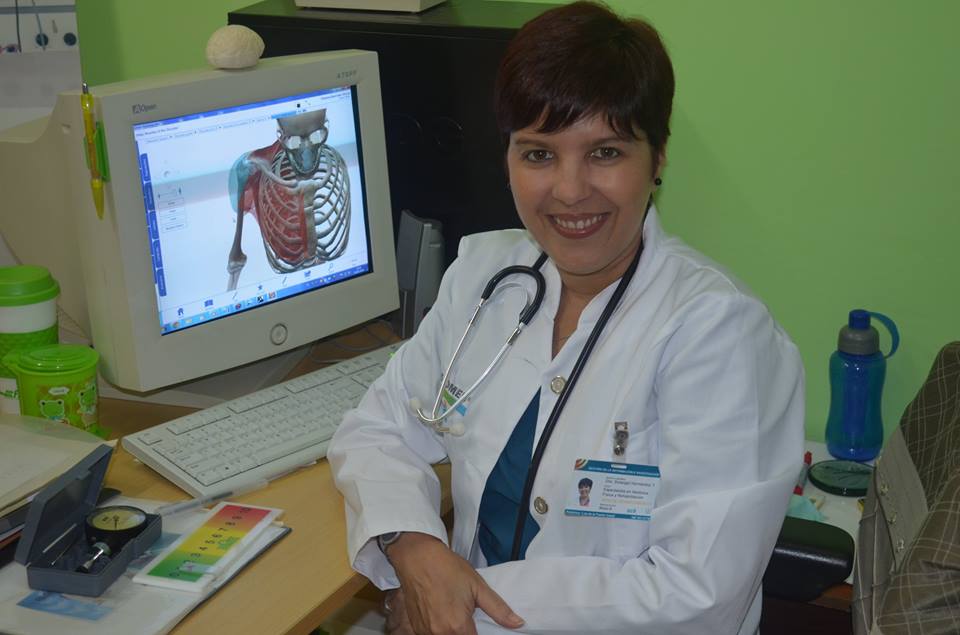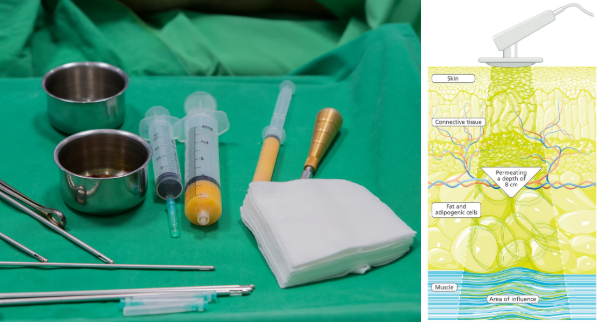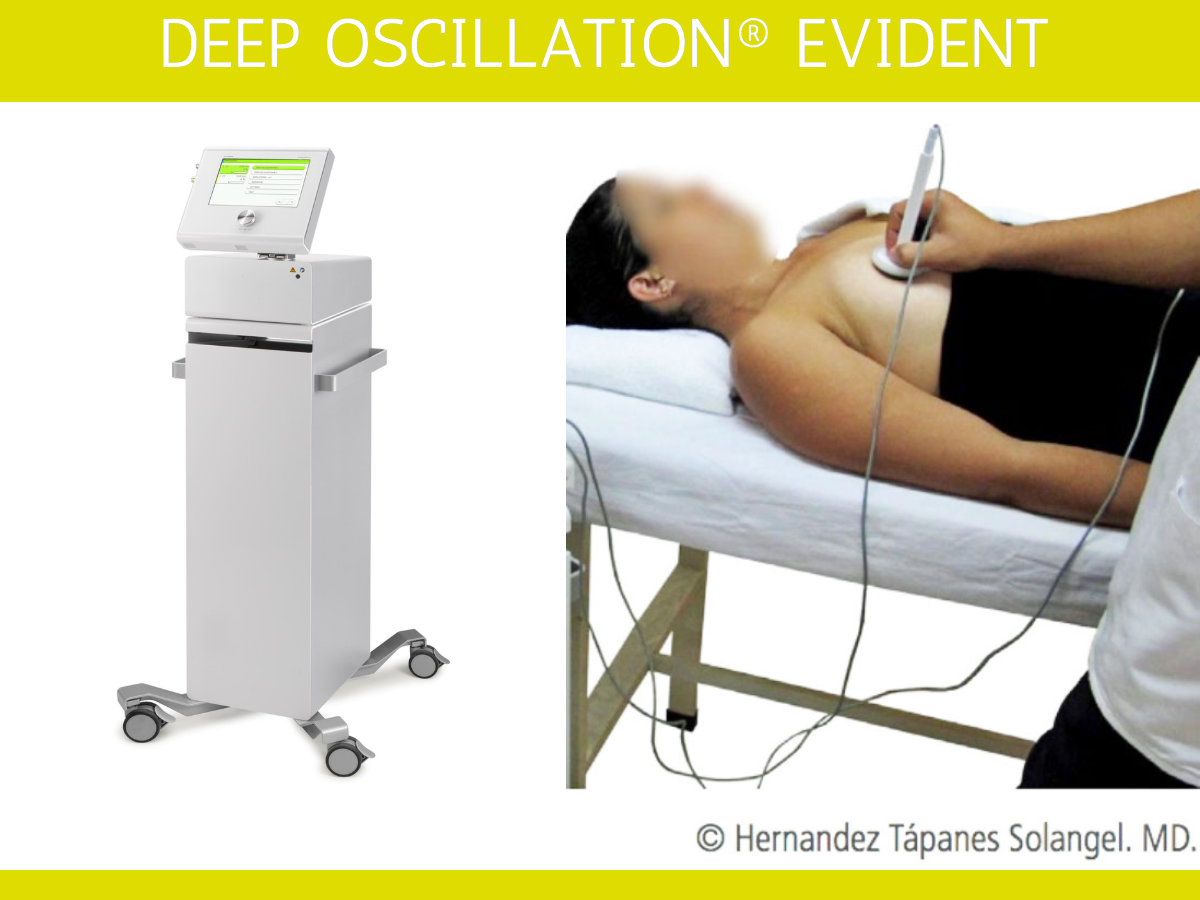Use of Deep Oscillation Therapy before and after fat transfer procedures in plastic surgery

Written By: Solangel Hernandez. MD. Master of Science
President of the Latin American committee for the management of scientific information in Rehabilitation. AMLAR
"For procedures such as liposuction, therapy with deep oscillation begins as soon as the patient can tolerate therapy, usually by the third or fourth day. This will help decrease swelling and oedema faster and allow a faster recovery. During the fat transfer, the placement of small pieces of fat requires multiple passes with the cannula. This tends to create a good amount of bruising and swelling. In general, bruising will resolve in 2-3 weeks. The swelling where the fat grafts were placed is generally accepted in 2 to 3 weeks, but it will take several months to completely heal. The swelling in the donor or the sites of extraction can take from 3 to 6 months to be completely resolved. This recovery time can be shortened with the use of Deep oscillation therapy, where several studies have demonstrated its efficacy in favouring cicatrization process preventing and mitigating fibrosis among other clinically documented effects.
Usually, the transplanted fat will have blood vessels growing in two weeks, the fat is a fragile tissue that can be easily damaged. The techniques used to harvest fat, washing it by removing the non-living components, and placing the tissue in a fashion that ensures it will be close to a blood supply are extremely important. In addition, the patients themselves (health, weight, access to donor tissue, hormonal status, scarring at the site of the graft, etc.) can influence the survival of fat. Studies have shown a survival rate of up to 85%. The treatment with deep oscillation should be agreed with the plastic surgeons that attend to the individual characteristics of each patient and the type of lipo-transfer that is performed.


I personally use the deep oscillation on the fat transfer site from the fourth day. This must be dosed with the objective of mobilising the inflammation and the fluid, as well as favouring the growth of the blood vessels in the grafted fat. I usually recommend the use of manual applicators to make the contact much more uniform of the two surfaces (surface of the manual applicator / surface of the skin)
I also recommend the use of therapy with deep oscillation with gloves in relaxing doses before the surgery at least 5 sessions to achieve optimal fat transfer and thus allow a greater volume of transferred fat. For this reason, it is beneficial to perform massages with deep oscillation in the area of fat transfer to break the fibrous connective tissue that may be present. Deep oscillation therapy helps loosen the skin and connective tissue in the area, which can create more space to transfer fat. This can not only help create more space, but can also benefit from reducing the pressure on the fat that is transferred.
This inexorably helps to make the surgery even more successful, to shorten the recovery and to help remodel even more the grafted fat, so that the level of satisfaction will be even greater in patients"

Impact of Deep Oscillation on the Lymphatic System
Oedema and haematomas occur as a result of bleeding as well as destruction or damage of lymphatic capillaries by trauma (mechanical, surgical etc.). In the acute inflammatory phase of wound debridement, there is also increased phagocytosis and a generally higher need for transport of extracellular protein, blood cells and other particles (exudation). This results in an enormous interstitial increase in the lymphatic load. As a result, post-traumatic oedema develops by overloading the lymph transport system (high volume insufficiency) and backing up in the interstitial space, in spite of increase in the lymphatic flow rate.
Increased resorption of subcutaneous oedema by deep oscillation has been shown in several clinical studies. This can be explained by two hypotheses. One would be that mechanical stimulation at the level of the interstitial ground substance produces mixing of materials to be transported with the lymph, enhances its distribution and thus increases the surface area for resorption. Another would be that mechanical impulses generate deforming forces that act on the collagenous fibre structures of the interstitial space, and these apply tensile forces to the endothelial layer of the initial lymphatic vessels (lymph capillaries and pre-collectors) via anchor filaments. In this way they could open junctions in the endothelial layer for inflow of fluid, and assist the interstitial drainage mechanism.
Video description:
- Post-traumatic oedema formation: Bleeding, increased transport demands, high volume insufficiency, backing-up in interstitial space.
- Deep oscillation assists resorption of oedema: Mixing materials for transport with the lymph, distribution, increasing surface area, tension on endothelial layer of initial lymph vessels (lymphatic capillaries and pre-collectors) via collagenous fibre structures in the interstitial space, opening junctions for fluid inflow, assistance of the interstitial drainage mechanism.
- Transport of lymph together with materials such as various extracellular proteins, blood cells and other particulate material.
- Valves can already be found in the pre-collectors at intervals of 2-3 mm. Transport of lymph is the exclusive function of lymph collectors and the lymph ducts connected with them.
- The lymphatic system contributes to homeostasis by influencing the volume of extracellular fluid, the interstitial protein concentration and the tissue pressure.
Bibliography
1. Ruan QZ, Rinkinen JR, Doval AF, Scott BB, Tobias AM, Lin SJ, Lee BT. Safety Profiles of Fat Processing Techniques in Autologous Fat Transfer for Breast Reconstruction. Plast Reconstr Surg. 2019 143(4):985-991 Available at: https://www.ncbi.nlm.nih.gov/pubmed/30921112
2. Shiffman MA, Mirrafati S. Fat transfer techniques: the effect of harvest and transfer methods on adipocyte viability and review of the literature. Aesthetic Plast Surg. 2018. Available in: https://www.ncbi.nlm.nih.gov/pubmed/11553171
3. Clauser L, Zavan B, Galiè M, Di Vittorio L, Gardin C, Bianchi AE. Autologous Fat Transfer for Facial Augmentation: Surgery and Regeneration. J Craniofac Surg. 2019. Available at: https://www.ncbi.nlm.nih.gov/pubmed/30817527
4. Hernandez, Solangel et al. The Effect of Deep Oscillation Therapy in Fibrocystic Breast Disease. A Randomized Controlled Clinical Trial. International Archives of Medicine . 2018. ISSN 1755-7682. Available at: http://imedicalsociety.org/ojs/index.php/iam/article/view/2789


